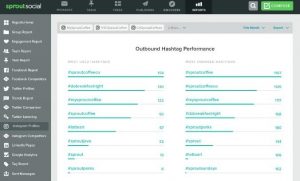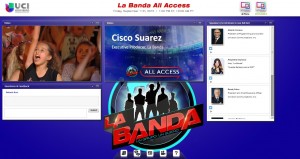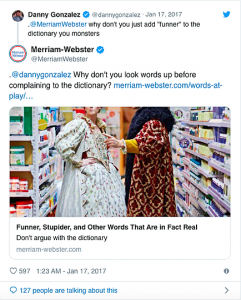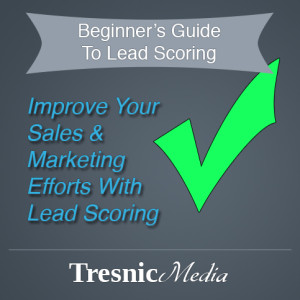It’s no secret that email is still the #1 most effective marketing channel around. Unlike other channels like PPC or social media marketing email has one significant difference: it’s permission based.
Permission meaning people willingly agree to accept your communication. Where ads and promotional campaigns do their best to shove pretty pictures and off-the-cuff headlines in our faces, emails sent to our inboxes are warranted. People that give you their email are granting you permission to market to them.
That’s half the work of marketing done right there!
If you want to improve the effectiveness of your email marketing apply these 60 email marketing strategies, tips, and examples.
***
1. One Call-to-action maximum
For the highest conversion rate possible it’s best to have only one call-to-action in your email. Period.
Having more than one CTA creates too much choice and confusion. As the number of choices increases the recipient may fail to make a decision. The conversion goal should be clear and the recipient should only have the choice of claiming your offer or not.
It may be tempting to stuff your emails with as many CTAs as you can but that may backfire. If you desperately need to have more than one CTA make the most important one the priority.
Philips Sonicare ran a multivariate test to find out which of their newly designed emails would convert the best. Surprisingly they found that the plainly designed emails with a single CTA converted far better than the other well designed variations.
Don’t muddle your CTA or overcrowd it with other CTAs, images, and text. The more decisions you ask your users to make the greater chance they won’t make one at all.
2. Design for Thumbs
Half of all emails are now opened on mobile devices. Remember this and design for smaller screens. Things like buttons should be made large enough to be clicked on small screens. Add lots of white space so that information can be read easily and CTAs can be seen/clicked. You don’t get much real estate on small devices so make use of all the space and most importantly, use a responsive layout.
3. Create Urgency by Setting a Deadline
Don’t use a manufactured or fake deadline, create a sense of urgency by explaining your offer and the need for it to be claimed immediately. Smart marketers do not rely on fake deadlines and ruin the trust they’ve built with their audience. Instead create a deadline for your offer and stick to it. Your audience will know then that your offers and real and jump at the opportunity to claim it.
4. Emails with just one image have highest click-through rates
ConstantContact analyzed over 2.1 million customer emails and found that emails with only 1 image had the highest click-through-rate.
Now that over half of all emails are opened on mobile devices, shorter more concise emails perform better. Based on this information it’s safe to say that recipients favour emails they can read at their desktop or on the train on their way home.

5. Use templated emails for pull content and personal ones for push content
Templated emails are ones that are built using a prebuilt template. Email newsletters for example, are written and styled with some sort of email software. They look like a physical newsletter and are obviously not hand created each time they’re sent out.
Email newsletter are what are considered pull content, meant to ‘pull’ traffic to your website. Email newsletters are sent to a large audience so it helps to use a prebuilt template to help you efficiently ‘nurture’ your leads.
Push content on the other hand should be made personally to ‘push’ a recipient towards some sort of goal, like signing up for a free trial or downloading a case study. These emails are sent less frequently and are meant to build a relationship between a seller and buyer. Use personal emails to increase the authenticity of your offer and make it clear that it’s being sent by a human and not a faceless robot.
Email Copywriting Tips
6. Most Mobile Devices only allow for 33-38 character long subject lines
Christa Sutherland of MailerMailer says that, “According to MailerMailer’s 2015 Email Marketing Metrics Report, messages with medium-length subject lines yielded the highest open rates. More specifically, those with subject lines of 28 to 39 characters resulted in the highest average open rate of 12.6%. In comparison, messages with the shortest subject lines (4 to 15 characters) produced an average open rate of 12.1%.”
About 50% of all emails are opened on mobile devices, mobile devices that have physically grown in size throughout the years. This means more screen real estate and more room for characters in email subject lines.
Remember that your email subject line is more important than the content of the email. Why would the content matter if the email isn’t even opened?
Rather than concentrating on the length of your subject, think about the emotions it invokes instead. Is it exciting? Curious? Urgent? Test subject lines with your audience and do what respond best to.
7. Avoid Email Spam Trigger Words
To the chagrin of many marketers, webmail services like Google’s Gmail have become increasingly better at filtering out promotional and spam emails. These spam filters work by filtering out specific trigger words that are highly associated with spam emails.
To save your emails from being filtered directly to the trash it’s best to avoid using ‘spammy’ trigger words in your subject lines. Well known spam phrases like “Earn $ ”, “Work from home”, “Miracle” or “Meet singles” get sent directly to the spam folder.
8. Give a 1-2 Subject Line Punch by Leveraging Pre-Header Text
Preheader text is the text that comes up after the subject line in the email. By default yours might show something like:
- Having problems viewing this email? View online
- To ensure delivery to your inbox, add us to your contacts
- Can’t see this? View in browser
That is a missed opportunity for some text that supports the subject line.
The red box in the example below shows where the pre-header text is placed in Gmail.

Take advantage of pre-header text by adding in some important info to support your subject line like:
- Free Shipping All Week!
- Check out our mobile site
- Buy one get one free
Preheader text, along with the subject line, is the first thing recipients see so it helps to add more information to get them to open the email. It gives the recipient a little preview as to the content of the email so make sure it is extra persuasive.
9. Don’t automate your greeting. Try warm wishes, best regards, or greetings from sunny England. Mixing up your greetings makes you less robotic, and more personal.
Instead of using a generic greeting like ‘Hi’ or ‘Hey there’ try mixing things up with something a bit more natural. The key here is to make your emails appear more personal and less automated.
10. Use the power of the P.S.
According to CopyBlogger, a P.S. at the end of your emails ranks as one of the things recipients will always remember. A reader will always read the P.S. because it sticks out as an odd element that is separate from the content.
A P.S. is the last element on the page thus easier to remember so use it to reinforce one of your offers.
Alex from Groove uses a P.S. in his emails to get recipients to share his most recent article with a handy pre-populated tweet.

11. Numerals are the best thing to use in your subject line to stop skimmers and have them focus on you
Instead of writing ‘twenty three’ write ’23’ to catch the attention of those who only skim through content. Numerals stick out amongst text, especially long and large blocks of text according to Nielsen Norman Group research.
12. Double Newsletter Open Rates with a Reminder Email
Have a promotion running or an event coming up?
A reminder email is one of those email best practices that can make your recipients act. Using automation you can schedule an email to be sent out a week or two before your offer expires. It’s a gentle reminder that time is expiring and that they need to act soon to claim your offer or to save their spot.
13. Speak to the Lizard Brain
The Lizard Brain might sound like a weird type of artisanal beer but we are all said to have one as a direct result of human evolution. It’s where our ‘fight or flight’ response is born out of. The Lizard Brain or Reptilian Brain as it’s also known as, is where much of our instinct and raw emotion comes from.
Accordingly there are 6 ways to speak to the Lizard Brain:
- Self-centered-ness – The Lizard Brain wants to hear about itself.
- Contrast – The Lizard Brain understands things quickly in black and white, right or wrong.
- Tangibility – The Lizard Brain is impatient and gets to the point fast.
- Beginning and End – The middle doesn’t matter only what’s at the beginning and end.
- Visual stimuli – Bright and shiny objects grab and hold attention most.
- Emotion – Appeal to the emotive responses of the Lizard Brain for the biggest reaction.
14. Write your marketing emails like you write emails to your friends
In general, people hate being marketed to. How many people have you heard say ‘I love those ads on that play before YouTube videos’ or ‘I love how that store follows me around with those display ads’? None I bet.
Our advice? Don’t write your emails like a marketer, approach your writing like you’re speaking to a close friend. Keep the communication casual and friendly and treat them like an actual person.
15. Personal Examples and Offers
Personalized or targeted emails drive 18 times more revenue than generic broadcasted emails. The more the content of the email matches the intent or interest of the recipient the more likely they will convert on your desired goal.
For example, an auto dealer would more likely use your marketing service if you sent them a case study of another successful auto dealer as opposed to sending them a case study on a fitness centre.
You can accomplish this with a little bit of segmentation. When you’re collecting leads through a form, make sure to add one personalization feature such as industry or position title. This way you’ll be able to send targeted content to each of your segments ie. content for auto makers or content for social media managers.
Top Performing Keywords for types of Subject Lines
16. Top Performing Keywords for Benefit-focused Subject Lines
- Best
- Cheapest
- Easiest
- Fastest
- Prettiest
- Quickest
17. Top Performing Keywords for Clickbait Subject Lines
- Get rid of
- Secret of
- Shocking
- What you need to know
- Won’t believe
18. News
- Announcing
- Discover
- Find
- Introducing
- Learn
- New
- Read
- See
19. How-to
- How to…[do something really cool]
20. Discount
- 2 for 1
- Clearance
- Discount
- Half off
- Offer
- Sale
- Save
21. Command
- Add
- Aim
- Buy
- Call
- Click
- Download
- Get
- Open
- Put
- Register
- Try
22. Personal
- He
- I
- It
- Me
- Mine
- Our
- You
23. Reason Why
- Here’s how
- Steps
- Ways
- Why
24. Price
- %
- $
- Free
25. Urgency
- Expire
- Expiring
- Extended
- Hurry
- Last chance
- Limited time
- Now
- Running out
- Still time
26. Consistent layout for every email
If you have the same layout for every email, it makes it easy for people to read every single one, because their eyes will be trained on what to look for. Using a brand new layout and colour scheme each time will force your readers to learn your new format each time which makes for a poor user experience, not to mention a lower conversion rate.
27. Include the name of your company in the From Name of your email
If your email is being sent from your name or another person’s name without any company branding it could be ignored by the recipient.
When I subscribed to the Kissmetrics newsletter I received emails from Tomasz Borys. Having no idea who that was I promptly deleted it. It wasn’t until I accidentally opened one I knew it was from Kissmetrics.
Include some sort of branding in your email so that the recipients know who the emails are coming from.

28. The 9-word reengagement email
One person got 750 responses after emailing 1,200 people on a stagnant list (a 62.5% response rate!)
Here’s how to do it:
Subject line: {first name}
Body: Are you still looking at getting [insert your service/product]?
Here are a few examples:
- “Are you still looking at getting your kitchen renovated?”
- “Are you still looking at building a new website?”
- “Are you still looking at buying a new car?”
- “Are you still looking at growing your blog traffic?”
Here is an example of how the whole email should look:
From: Website Business
To: bob@company.com
Subject: Bob
Body:
Are you still looking at building your website?
– Jordan
=========
That’s it! But why does this work so well?
This email generates curiosity and a certain level of personalization. The casual nature makes it seem like it’s coming from a real person thus will garner a real response.
29. Clarity Trumps Creativity in Subject Lines
By focusing on clarity over creativity in their email subject lines, MarketingSherpa saw 541% more open rates.
The more ambiguous or unclear the subject line is the less likely a recipient will open it. Make the most of your email subject line by explaining with clarity what the email is about, DON’T reveal everything or else it won’t be opened at all. Clarity is paramount.
30. Use CoSchedule’s Headline/Subject Line Analyzer
Subject lines can be a tricky thing to get right to maximize your open rate.
Make your life a little easier with CoSchedule’s headline analyzer. It will analyze all the words in the subject line and score it based on the types of words used and the character count. The better you can a balance elements like power or emotive words the better score you’ll get. The best way to do this is to come up with 5-10 subject lines and test each with CoSchedule’s headline analyzer.
31. Use Grammarly to check your grammar and spelling (it’s free!)
Grammar and spelling mistakes are terrible mistakes to have, especially if you’re trying to come off as a professional business. It’s a sign of poor quality control at the most basic level.
Mistakes in emails can be difficult to catch and may go unnoticed without a keen eye. No one’s perfect but we can all strive to be better. Grammarly is a tool that checks the spelling and grammar of everything you write across the web. Grammarly will catch pesky grammar mistakes that a typical word processor like Microsoft Word won’t. It’ll recommend grammar changes and help you become a better writer, especially in emails.
32. Specificity Rules
Strive to be as specific as possible in your email subject lines. Ambiguous subject lines create confusion for the recipient. Ambiguity creates friction and poses questions. Ideally we want the decision to open the email to be fast and emotional. The recipient should transition quickly from ‘What’s this?’ to ‘I want it!’.
As VerticalResponse writes, “The more specific your emails are, the more likely your readers are to click on them. ‘Big Sale!’ is too vague and open-ended to mean much. Instead, try something like, ‘Save 40% on our most popular model today only!’ It gets right to the point, creates urgency, entices the reader, and invites curiosity: Which model is the most popular one, why is it so popular, how awesome is it that it’s 40% off, and what time am I going to get one?”
33. Exclusivity This is not for everyone, maybe not even for you.
Exclusivity constantly ranks as a high incentive for action. Excluding or even the thought of exclusion is enough to made people question themselves and act out of emotion. The exclusive golf/country club on the west side or the exclusive mastermind business group, are all things that are longed after by outsiders. “You won’t let me into the VIP area?!… I’ll show you.”
Infuse a bit of exclusivity in your email subject lines for a little more punch. Make your offer exclusive or the act of claiming a rare deal or product.
Example: Conversion Rate Experts – Read this only if your sales exceed one million
34. Mix up your sentence structure to make your email copy more readable
Having too much text is a problem that goes unnoticed by most email marketers. Long sentences and large paragraphs make the content hard to consume. Remember that most email is opened on mobile devices so try to make your words short and succinct. Brevity is a virtue when it comes to email.
35. Use active voice.
A good way to check for active voice is to measure your use of helping verbs or “to be” verbs like was, will, is, are, am, etc. Instead of, “Our product will help you…” try “Our product helps you…” Simple tweaks make a big difference.
36. Lose all the jargon.
Every brand has their own acronyms and industry terms that make sense—to them. When you write for humans, you have to keep in mind that just because it makes sense to you, doesn’t mean it will to everyone else. Jargon isn’t just bad, it’s overused and meaningless for your subscribers. How many things out there are “disruptive,” “the Uber for X,” or “#1?” Don’t be that guy.
37. Do A CRABS Check
No not that crabs, the other one. CRABS is a little checklist created by Dave Chaffey author of Total Email Marketing. Before you shoot off your email check for CRABS.
CRABS stands for:
- Chunking – One idea per paragraph, 1 or 2 sentences max for easy reading.
- Relevance – Stick to the meat, only write about what matters and remove all the fluff.
- Accuracy – Don’t overpromise and underdeliver on your offer. State what you’re offering exactly to avoid any confusion.
- Brevity – Get to the point. Stop beating around the bush. Hit all the points you need to, no more no less.
- Scannability – Check if the most important words and phrases are going to be seen by those who quickly scan. You should be able to pick up on the highlights of your email quickly.
38. Don’t use a person’s name more than once per email
A bit of personalisation is fine, but if you overdo it it’s just a little bit creepy. Instead try something a bit different. If you serve a local audience try using their city name in the subject line. Personalization is important just keep it to a limit.
39. The ‘You Are not alone’ Subject Line
Let your reader’s know that someone is on their side. You’re that someone who understands their problems, fears, and pains. What keeps them up at night? What makes them feel happy, sad, alone, afraid, disgusted? Target those pain points to get your reader to open the email then make sure the contents provide the solution.
- Example: The Problem With the 5 Most Asked Interview Questions
- Example: Your Last Chance for the Adventure of a Lifetime
40. The Last Call Formula:
- Last call: [Name Of Product] closes in [#] hours
- Example: Last call: SEO That Works closes in 3 hours
41. The Don’t Buy This Formula:
- Don’t buy [Product Name] until you read this
- Example: Don’t buy Welcome Mat until you read this
42. The Social Proof Subject Line
- Examples: Find Out Who Else is Using [Your Great Product]
- Learn How the 100 Top Businessmen Benefited from [Your Service]
- Successful Online Entrepreneurs in [Client’s Location] Use This Strategy to Increase Productivity
43. The Invitation
- You’re Invited: Come See [Your Company’s] Great New Gallery
44. The What If Email Formula:
- What if [Negative Result]
- Example: What if Youtube shutdown
45. The Never Met/Seen Email Formula:
- The Most [Hated/Loved] [Person] You’ve Never Met/Seen
- Example: The most loved salonist you’ve never met
46. The Normally Email
- Formula: Normally We [Do Something]. You Get It [New Way]
- Example: Normally we charge $ 500 for this advice. You get it free.
47. The Problem Email
- Formula: The Problem With [Insert Problem]
- Example: The problem with pricing too low
48. The Big Mistake Email
- Formula: My Big [Topic] Mistake
- Example: My big self defense mistake
49. The Lessons Email
- Formula: [Topic] Lessons From A [Weird Source]
- Example: Programming lessons from a real life ninja
50. Quote a B.U.D.A.
- EXAMPLE: “New York Times: New software KILLS banking”
- A B.U.D.A. is a Big Undeniable Dominant Authority. The New York Times, Amazon, Google, the FDA, the President of the United States etc. When they make quotes that prove your points, it’s great to use them as subject lines.
51. The dotted cliff-hanger
- One way to use curiosity is to create a cliffhanger. The cliff hanger is a method that leaves you with the burning question: “What will happen next?”. We see it in any good soap opera (if you believe such a thing exists) or television series. One form of cliff-hanger is easily recognized, the three dotted end. This is the email subject line that ends with …
- Examples: Secret Escapes Team –
 On the second day of Christmas…
On the second day of Christmas…
- Banana Republic – Shoes don’t make the man, but…
- HMV – Mr. Grey Will See You Now… (50 shades of Grey promotion)
- Ann Taylor – Between Sandals And Boots, There’s This…
52. The ‘How Can I Help You’ Welcome Email
When welcoming a new email subscriber take the opportunity to put the ball in their court. Ask them what they’re looking to get out of your new relationship and how you can best help get them there.
Here’s a fantastic example of a helpful welcome email from Drift:

53. Have only one CTA for the best conversion rate
In One Email, One CTA on the 500 Startups blog, Susan Su writes the following:
“One of the principles I talk about most when I talk about email marketing for growth is “one email, one CTA.”
It’s a simple rule:
Each email campaign should only have 1 tight, focused call-to-action.
- Have only one button so that the choices are simple, click through or don’t click through.
- It’s possible to use more than one instance of your call-to-action for example, ‘Get the resource’ and ‘Learn more’.
- It’s possible to place the same link in more than one place like your button, inline link, and in your header image.
54. Make Subscribers Feel Like They’re Getting Access to Something Exclusive
It’s no secret that people like to be made to feel special. Use this to your advantage by creating something special with your email list. It’ll encourage much stronger community building amongst your network.
Apple does this perfectly with each of its product releases. Instead of waiting in the cold outside an Apple store for the latest iPhone, email subscribers can pre-order one and skip the line. Apple uses a touch of exclusivity with their pre-orders to make their subscribers feel special.
55. Make Your Emails Feel like a continuous conversation
Treating email like a continuous conversation makes it feel more personal, like a real conversation.
For example, say in your email ‘in my last email I told you how we did this, in this email I’ll show you how we built on that. In the next email I’ll show you how it affected our business and what we changed in another part of our business because of it’.
56. “People Like You” Effect
Personalization is a powerful tool that makes people feel like you’re speaking directly to them.
Emails like this from Airbnb, ‘What people like you do to [achieve goal]’ are personalized by location. Speak directly to your audiences and relate to them using the ‘People like you’ effect to add that extra inclusiveness.

57. Leverage the Zeigarnik Effect
The Zeigarnik Effect refers to that feeling that someone gets when something is left unfinished. Waiters are better able to remember things about tables that have unpaid bills than ones that have already paid. Akin to cliff hanger moments in your favourite TV shows.
Evernote labels their onboarding emails in a series of 5. If a recipient opens the first email they’re more likely to continue the series, moving onto the second.

Technical Email Tips
58. Use Countdown GIFs to increase urgency for webinar/event invitation emails
If urgency is something you’re trying to communicate in your email a countdown timer might help. For a special promotion, contest, or offer a countdown timer will get your audience to act quickly.
Litmus breaks down the process of adding a GIF countdown timer to your email in this short tutorial.
59. Use CTA URL parameters to pre-fill form fields to decrease work for people and increase conversion rates on the landing page
By using a prefilled formfield option you can reduce the amount of work your recipients have to do on a landing page form.
URL parameters can automatically insert recipient information into a form once they click your email’s CTA. Fields like name, email, business name can all be automatically filled into an event registration landing page form if a recipient clicks on your email CTA.
60. Use auto-submit URLs in CTA buttons to auto-register people for webinars direct from the email
Having auto-submit URLs in your CTA buttons can auto-register people for events like webinars, without them having to fill out a form.
If you already have all of their lead information it saves them from having to re-enter it for registration. Simply by clicking ‘register’ they’ll automatically be saved a seat.
***
Download your own pdf copy of this list and see all 350 email drip campaign strategies, ideas, and examples at www.emaildripcampaigns.com
(92)






